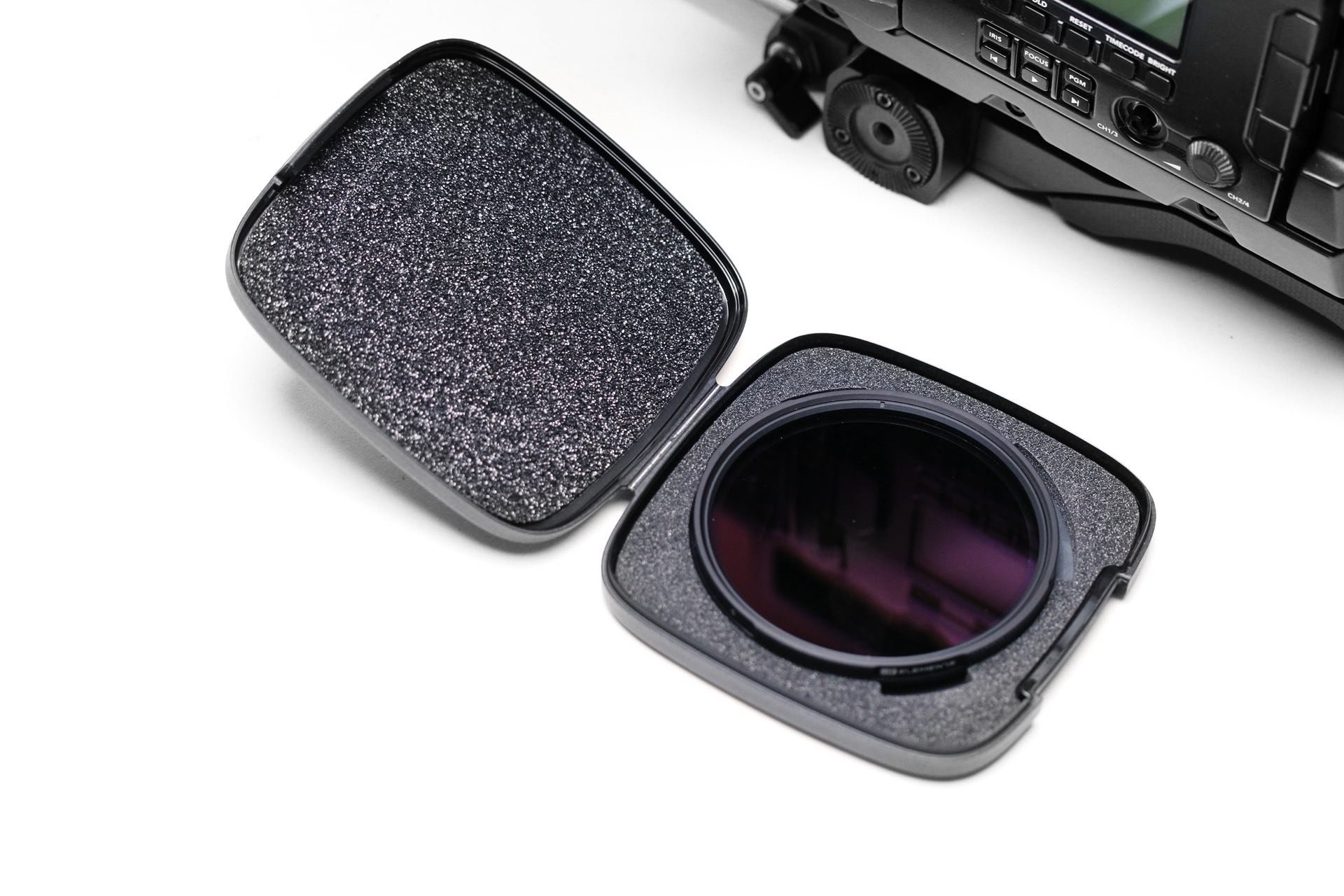Designed for photographers and videographers alike, the LEE Elements VND filters offer decent options that circumvent some of the problems often seen with variable ND.
There's a certain sector of camerawork that preaches against variable ND filters, often because someone's shot some material with one that produces problems when it's set near maximum density. In fact, that's a problem which has afflicted variable ND filters from some fairly big names, but Lee’s newly-released VND series has some changes that are pretty clearly intended to avoid both this and other problems.
The Lee Elements VND range, which is available in 67, 72, 77 and 82mm diameters, consists of two filters in each diameter. One of those two covers 2 to 5 stop reductions, while the other handles 6 to 9 stops, satisfying ND requirements almost all the way up to the sort of level needed by timelapse and blurry-waterfall enthusiasts. Other manufacturers have tried to cover a similar range in a single filter, which is often where the problems start and people start complaining about strange cross-shaped artefacts in the images they're trying to shoot.
How it’s done

Variable ND filters are still based on (linear) polarisers, though, and that does mean some other interesting behaviours. Lee has taken care to coat the outermost front and back surfaces of the filter with what's probably a quarter-wave plate; a thin film coating that turns linearly polarised light, which is what comes out of a conventional polarising filter, into circularly polarised light. In effect, it's a polarisation scrambler, and means the Lee VNDs don't actually behave as a polarising filter overall, and they don’t have any effect on reflections and skies. As such, we aren't forced into using a polarising effect any time we're using them. If you do want the effect of a polarising filter, you need to add one in front of the VND.
(Definitely not behind, because the quarter-wave will have scrambled the polarisation in the light from the scene and your polarising filter won't work as expected.)
A quick caveat
That all makes sense, but there's one small caveat. We’re necessarily into some speculation here, but if there’s a quarter-wave plate, and that quarter-wave plate is one quarter of a wavelength thick, it can only be one-quarter of one particular wavelength. In this case it's very likely to be a quarter of roughly 555-nanometre green light, which is right in the middle of the visible light range, and thus it’ll be as near as possible to being right for all the colours of the rainbow. This assumption is supported by the fact that it reflects a vaguely purplish sheen, suggesting it's reflecting fractionally more red and blue and transmitting more green (this is why coatings on lenses often have a coloured tint).
The upshot of this might well be that the quarter-wave plate, which is intended to more or less scramble the polarisation of light in the scene, only works ideally for one particular wavelength - green. If there’s any linearly-polarised blue and red, some of it may leak through to be attenuated by the polarising layers, and the result is a slight colour shift in polarised light – specifically and only in polarised light - from the scene as the VND is adjusted. LCD monitors may shift from faintly bluish to faintly yellowish, for example. Many polarisation-based filters do this and it's more an interesting curiosity of optics than it is an issue with Lee's design.
The second thing to note is that it's actually quite difficult to stack any further circular filters on the front of the Lee VNDs because they don't have front filter threads. That's presumably on the assumption that any filter with a rotating element will need to be at the front of the stack anyway, although if we did want a polariser and we didn't have a mattebox we might want to thread one onto the front of the lens. Yes, dealing with two stacked circular filters with rotating elements would be a nuisance, but it's not an option with the Lee VNDs. Probably nobody would ever choose to do that anyway.
Verdict: well-done, nice build
The build is very nice, with comparatively chunky rings, easily-findable grips and the glass clamped with threaded rings as opposed to being clipped or glued. They'll be particularly useful for people using cameras, perhaps stills-based cameras, that lack internal NDs but who don't want to deal with a mattebox or interchangeable conventional NDs, or for anyone suffering an excess of sensitivity and who wants to fine-tune depth of field.